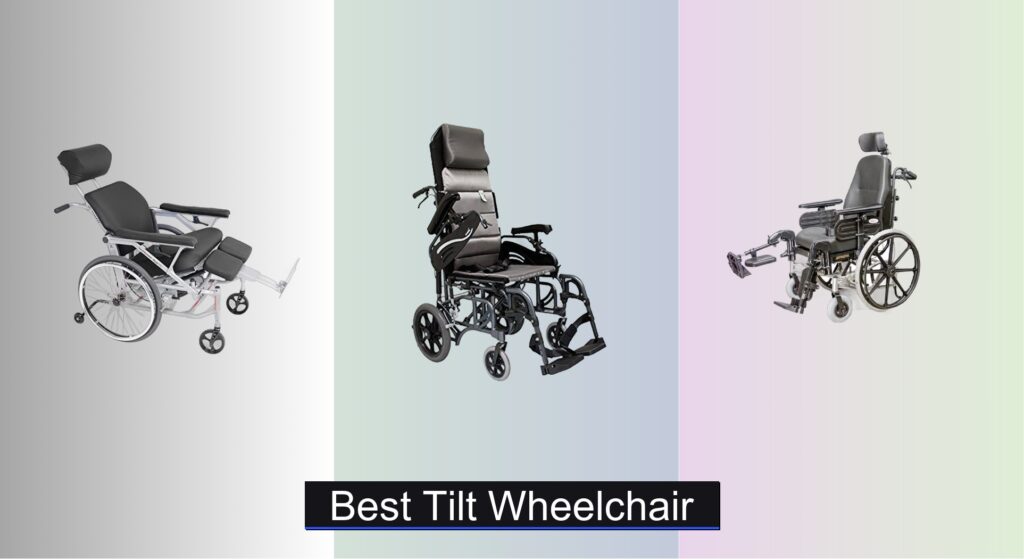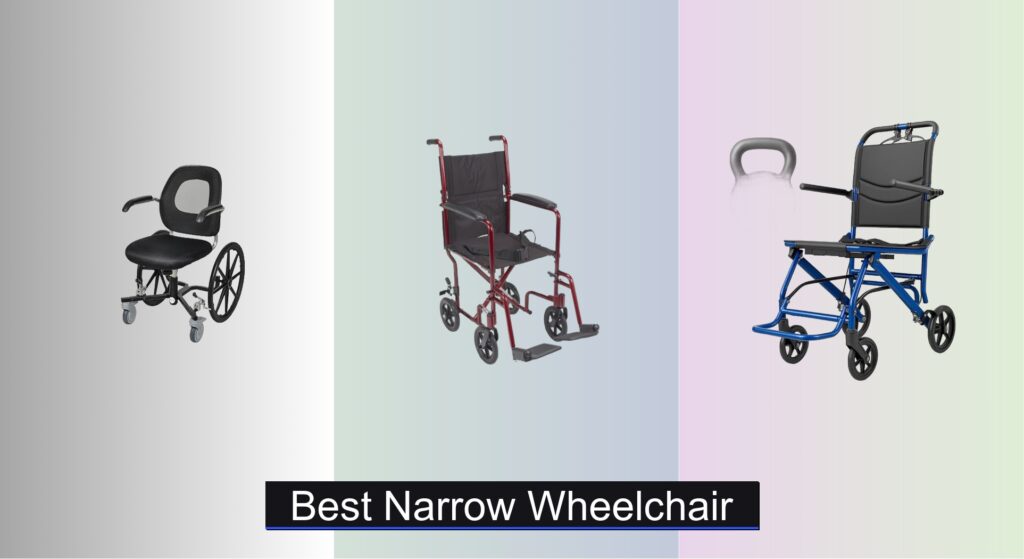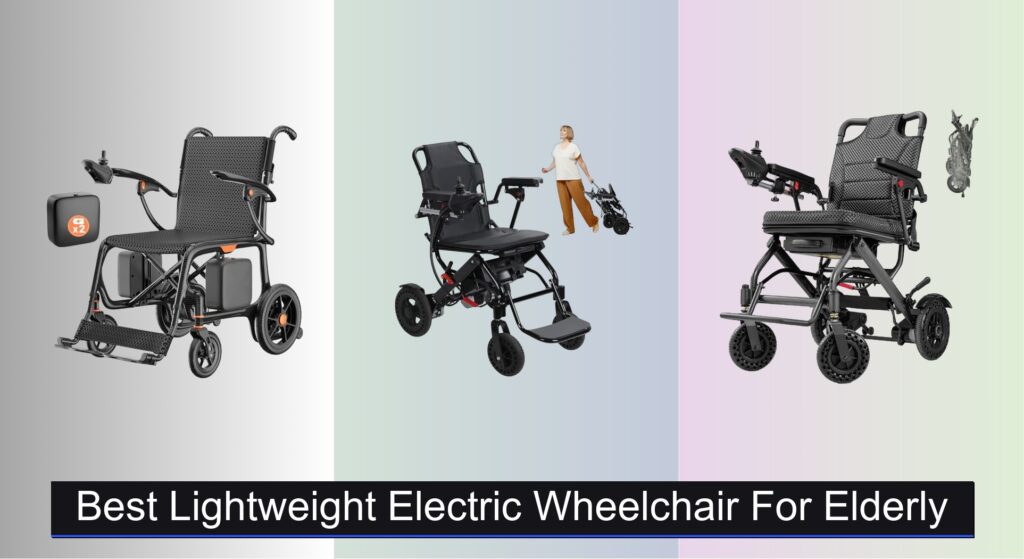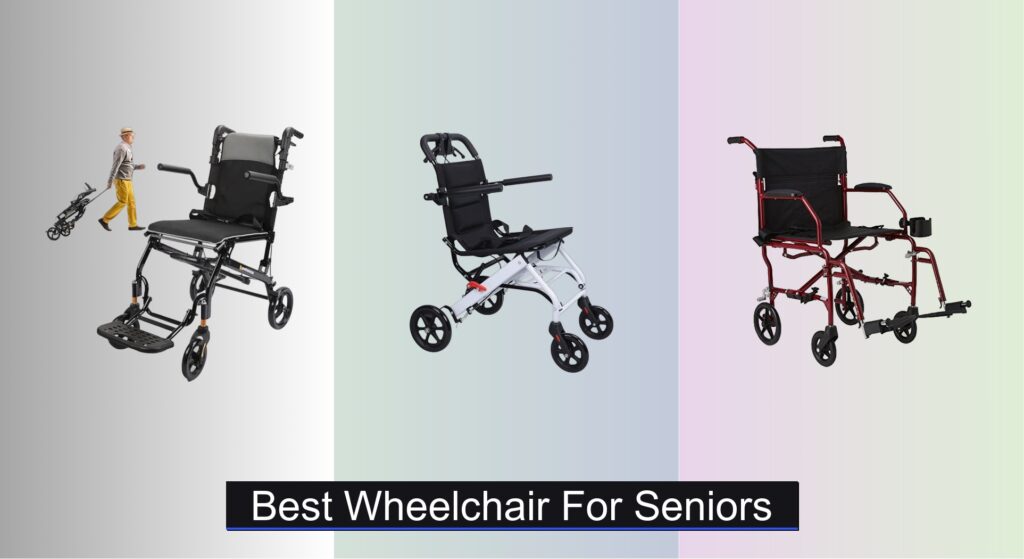Navigating gravel paths and uneven terrain in a standard wheelchair can be frustrating, exhausting, and even unsafe. Many users struggle with poor traction, uncomfortable vibrations, and limited mobility due to underpowered motors or inadequate tire design. The right wheelchair for gravel needs to combine durability, stability, and smooth handling to ensure independence and confidence outdoors. That’s where all-terrain models—designed with powerful motors, pneumatic tires, and enhanced suspension—make a critical difference.
We analyzed over 50 electric and manual wheelchairs, focusing on real-world performance, user feedback, and key specs like motor power (500W+), wheel size, and ride comfort. Our top picks balance performance, portability, and value, ensuring you can tackle gravel trails with ease. Keep reading to discover the best wheelchair for gravel that fits your lifestyle and mobility needs.
Best Options at a Glance


600W Reclining Electric Wheelchair
Best for All-Terrain Performance
- 30 miles
- 30AH
- 600W
- 5.5 mph
- 400 LB

Foldable Reclining Electric Wheelchair
Best for Comfort and Reclining
- 20 miles
- 500W
- 6 mph
- Pneumatic
- 90″–140″

33 lbs Ultra-Lightweight Electric Wheelchair
Best Lightweight All-Terrain
- 33 lbs
- 15 miles
- 360W
- 12 AH
- Yes

Saterkali Ultra-Lightweight 13.66lbs Wheelchair
Best Manual for Gravel
- 13.66lbs
- 180lbs
- Aluminum Alloy
- 1-second collapse
- Polyurethane with 360° casters

Medline Lightweight Transport Wheelchair
Best for Large Wheels (Manual)
- 26 lb.
- 300 lb.
- 19″ x 16″ wide/deep
- 12-inch
- Handbrakes

Medline Ultra Lightweight Transport Chair
Best Ultralight Manual
- 15 lbs.
- 19″
- 300 lb.
- Aluminum
- 8″

Compact Folding Electric Wheelchair
Best Budget Electric
- 15 miles
- Lightweight
- Yes
- Electric
- Joystick
Best Wheelchair For Gravel Review
How to Choose the Right Wheelchair for Gravel
Choosing a wheelchair for use on gravel and uneven terrain requires careful consideration of several key features. Unlike smooth surfaces, gravel demands a wheelchair that prioritizes stability, power, and comfort to ensure a safe and enjoyable experience. Here’s a breakdown of the most important factors to consider:
Motor Power & All-Terrain Capabilities
The motor is arguably the most critical component when navigating gravel. For electric wheelchairs, look for models with dual motors – this distributes the power more effectively than a single motor, providing better traction and the ability to handle inclines and loose surfaces. A wattage of 500W or higher is recommended for consistent performance on gravel. Brushless motors are preferable, as they are more efficient and require less maintenance. For manual wheelchairs, larger wheel sizes (12” or greater) are essential, allowing you to roll over the gravel rather than getting bogged down in it.
Tire Type & Suspension
Tires significantly impact the ride quality and stability on gravel. Pneumatic (air-filled) tires are the best choice, as they offer superior shock absorption and a larger contact patch for improved traction. Look for tires with a relatively wide profile for added stability. Solid tires, while puncture-proof, transmit more vibrations and can make the ride significantly less comfortable. Suspension systems are a huge benefit, especially for longer distances on very uneven gravel. Suspension absorbs shocks, reducing fatigue and improving control. Even basic suspension can make a substantial difference in ride comfort.
Wheelchair Weight & Portability
While power is important, weight also plays a role. A lighter wheelchair is easier to maneuver and transport. However, lightweight materials must be balanced with durability. Aircraft-grade aluminum alloy is a good compromise, offering strength without excessive weight. If you plan to transport the wheelchair frequently, consider a folding model for easier storage and portability. Be mindful of the folded dimensions and weight to ensure it fits comfortably in your vehicle.
Comfort & Ergonomics
Gravel terrain can be bumpy, so comfort is paramount. Look for features like a well-padded, ergonomic seat and a breathable backrest to minimize pressure points and prevent discomfort during extended use. Adjustable features, such as seat height, armrests, and footrests, allow you to customize the wheelchair to your individual needs and ensure proper posture. Reclining features can provide additional comfort and pressure relief, particularly on longer journeys.
Other features to consider:
- Battery Range: (Electric wheelchairs) – Ensure sufficient range for your typical use.
- Braking System: Reliable brakes are crucial for safety.
- Joystick Control: (Electric wheelchairs) – Intuitive and responsive controls are essential.
- Frame Material: Aluminum alloy offers a good balance of strength and weight.
- Safety Features: Seatbelts, anti-tip wheels, and LED lights enhance safety.
- Storage: Baskets or bags can be useful for carrying essentials.
Wheelchair Comparison for Gravel Terrain
| Product | Range (Miles) | Motor Power (Watts) | Weight (lbs) | Terrain Capability | Reclining Feature | Portability (Folding) |
|---|---|---|---|---|---|---|
| 30 Miles Range Electric Wheelchair | 30 | 500 | Not Specified | Grass, Gravel, Pavement, Slopes | No | Yes |
| 600W Reclining Electric Wheelchair | 30 | 600 | Not Specified | Grass, Roads, Gravel | Yes (90° to 160°) | Yes |
| Foldable Reclining Electric Wheelchair | 20 | 500 | Not Specified | Grass, Gravel, Inclines | Yes (90°–140°) | Yes (3 Seconds) |
| 33 lbs Ultra-Lightweight Electric Wheelchair | 15 | 360 | 33 | Gravel, Slope, Grass, Rough Pavement | No | Yes |
| Saterkali Ultra-Lightweight 13.66lbs Wheelchair | N/A (Manual) | N/A | 13.66 | Gravel, Grass, Mud | No | Yes (1 Second) |
| Medline Lightweight Transport Wheelchair | N/A (Manual) | N/A | 26 | Inside/Outside | No | Yes |
| Medline Ultra Lightweight Transport Chair | N/A (Manual) | N/A | 15 | Inside/Outside | No | Yes |
| Compact Folding Electric Wheelchair | 15 | Not Specified | Not Specified | Different Terrains | No | Yes |
Testing & Data Analysis: Finding the Best Wheelchair for Gravel
Our recommendations for the best wheelchair for gravel aren’t based on opinion, but rigorous data analysis and research. We prioritize evaluating wheelchairs based on specifications aligning with gravel terrain demands – motor power (500W+ for electric models, larger wheels for manual), tire type (pneumatic preferred), and suspension capabilities, as highlighted in our buying guide.
We analyze manufacturer specifications, comparing features like battery range, ground clearance, and weight capacity. User reviews are systematically assessed, focusing on reported performance on gravel and uneven surfaces. We look for patterns in feedback regarding traction, stability, and comfort.
For electric wheelchairs, we cross-reference motor type (brushless vs. brushed) with long-term reliability data. Where possible, we examine independent testing reports on motor torque and hill-climbing ability. We also analyze warranty information, as a robust warranty indicates manufacturer confidence in the product’s durability. While direct physical testing of every wheelchair isn’t always feasible, we leverage available data and expert opinions to identify models that best meet the needs of users navigating gravel paths. We continuously monitor new releases and advancements in all-terrain wheelchair technology to update our recommendations.
FAQs
What type of tires are best for a wheelchair on gravel?
Pneumatic (air-filled) tires are the best option for gravel. They provide superior shock absorption and a larger contact patch, improving traction and comfort compared to solid tires. This enhances the performance of your wheelchair on uneven surfaces.
How much motor power do I need in an electric wheelchair for gravel?
For consistent performance on gravel, look for an electric wheelchair with a motor wattage of 500W or higher, ideally with dual motors. This ensures sufficient power to handle inclines and loose surfaces, offering better traction and stability.
Is suspension important for a wheelchair used on gravel?
Yes, a suspension system is highly beneficial, especially for longer distances on uneven gravel. It absorbs shocks, reduces fatigue, and improves control, making the ride significantly more comfortable. Even basic suspension can dramatically improve the experience with your wheelchair.
What should I consider regarding portability when choosing a wheelchair for gravel?
If you plan to transport your wheelchair frequently, a folding model is recommended for easier storage and portability. Consider the folded dimensions and weight to ensure it fits comfortably in your vehicle, while still maintaining the necessary features for all-terrain use.
Conclusion
Ultimately, selecting the best wheelchair for gravel hinges on prioritizing power, stability, and comfort. Considering factors like motor wattage, tire type, and suspension will ensure a safer and more enjoyable experience navigating uneven terrain, allowing for greater independence and freedom.
Investing in a wheelchair specifically designed for challenging surfaces empowers users to explore beyond smooth pavements. By carefully evaluating your needs and researching available options, you can confidently choose a model that provides both reliable performance and lasting comfort on gravel paths and beyond.





